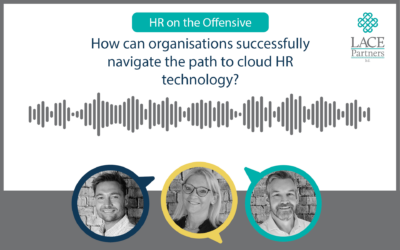In our weekly blogs, we’ve talked a lot about the different types of approaches businesses are taking to hybrid working. Each organisation is working through what is most relevant for them, as evidenced by our ‘silver bullet’ series we produced at the beginning of this year (you can read here – part one and part two).
In the early days of COVID, businesses scrambled to work out how to operate remotely. Later in the pandemic and since emerging, we switched to a ‘flexible’ approach where businesses let employees decide what worked best for them. Now we are entering the ‘optimise’ phase where the reality of maintaining an employee-led approach is kicking in, with businesses feeling the financial impact of unused office space and the longer term productivity, learning and innovation impacts of working from home.
Businesses are starting to take a firmer line about returning to the office, with a number making headlines recently: AO World has told staff to work in the office ‘or quit’, JP Morgan has insisted on managing directors being in the office five days a week to ‘lead by example’, BNY Melon has demanded that all workers attend the office 3 days a week or face ‘corrective action’, and Aviva is basing part of senior management bonuses on getting their teams back to the office.
What is driving this increasingly frequent approach of telling employees they MUST return to the office? Is it good or bad for business? And it is it possible to do this without alienating the workforce? Today’s blog explores some of these themes.
Is the power balance shifting?
With employment levels remaining high and employees demanding ongoing flexibility at work, it’s no wonder that, up to now, many employers have continued to allow employees to make their own decisions about how frequently they work from the office. The risk of losing people to competitors who offer more flexibility has been too high, particularly when it is not easy to find replacement talent. Employees have therefore held all the cards, and the government has also swung the balance further in their favour by allowing employees to request flexible working from their first day on the job.
However, as time has gone on, employers and employees are recognising the value that comes from being together in person at work. As JP Morgan stated when they announced their mandated return, leaders need to be ‘visible on the floor, they must meet with clients, they need to teach and advise, and they should always be accessible for immediate feedback and impromptu meetings’. It’s hard to achieve that from a desk at home.
For the more junior end of the workforce, there is real value to be gained from spending time in person with others at work from a development and coaching perspective. Having a compelling employee value proposition is critical, particularly when attracting the brightest young minds, when the world is their oyster in terms of career opportunities (you can read more on our thoughts on this here). What impact will the balance of home and office working have on making you their first career choice?
Similarly, for people who are new to a business, a remote onboarding experience can feel lack lustre and disappointing, particularly when you want to build work relationships in a new environment and immerse yourself in the organisation’s culture.
So, while the ongoing strength of the employment market may not be shifting the employee / employer power balance just yet, there is increasing acceptance that some time in the office each week is a good thing for employees and their leaders and, ultimately, the bottom line. The question is whether the degree to which people need to be in the office should be mandated or not. With an increasing number of businesses deciding the answer is yes, there will be less opportunity for those who don’t like the lack of choice to find somewhere more flexible to work.
Reputational damage
Does adopting a strict ‘return to work or quit’ approach have consequences for a company’s reputation? In today’s interconnected world, where information travels rapidly through social media and online platforms, negative headlines can quickly tarnish a company’s image and impact its ability to attract and retain talent. Glassdoor and other platforms give a voice to employees to voice discontent, which can become a barrier to attracting new talent.
Some employees who have never had a choice about where they work e.g. those in the retail, hospitality and manufacturing sectors, may see the headlines as a welcome shift. It is understandable that leaders in these sectors who have had to balance the needs of a workforce split between people who can work from home versus people who can’t, have decided enough is enough.
A lot of the recent headlines have focused on international financial services businesses with significant property portfolios to utilise and senior client relationships to manage. In those circumstances, there are good business reasons why they would want more people to come back to the office.
So, while it’s clear the dial is shifting, the challenge is how to get the balance right both in terms of how much time should be spent in the office and how much this should be mandated versus encouraged. Is it possible to achieve close to the same outcome of a mandated return without the negative impact of offering no choice?
In the end, the way this is managed will vary organisation by organisation: it will come down to business imperative and cultural style. Clear communication and transparency are essential. If an employee feels they are being forced back to the office with little to no clear explanation as to why and what’s in it for them, they are unlikely to welcome the change. However, if you present your employees with the business challenge and seek their feedback on how best to address it, reaching an informed consensus could ensure that you achieve wins for the employee and the employer.
Recent research shows there is a strong disparity between how employees and employers feel home working is impacting productivity, so sharing views and discussing the best way forward needs will be important to ensure both sides of the argument are heard and understood.
Leaders setting the example
Headlines such as this one about leaders being mandated back to the office, highlight the importance of practising what you preach within your organisation. Senior leaders are more likely to live in larger, comfortable houses with big gardens and plenty of personal space. As a result, they may well feel they can work perfectly well from home for the majority of their week. In comparison, their lower paid colleagues may be in shared accommodation without dedicated workspaces and perhaps less technical infrastructure like more expensive high-speed broadband. They may, in comparison, be eager to spend time in the office to experience a change of scene with the necessary infrastructure and space to work effectively, as well as the opportunity to have some fun. People earlier in their careers need to mix with their peers and leaders regularly, in person, so they can learn socially, receive structured and spontaneous coaching and grow in their roles,
So there are important cultural and engagement reasons for leaders to set the tone and come back to the workplace. Wider than just the office versus home working paradigm, leading by example is a powerful way of uniting teams and creating an environment of united purpose. Levelling the playing field creates a more open dialogue between employees and directors and, importantly, gives staff of all levels the opportunity to learn from more experienced colleagues.
In return, leaders will receive far more rapid feedback, particularly informally, if they are in the office to ‘pulse check’ and sense the mood. The power of ‘floor walking’ as leader to get a feel for the atmosphere alongside being able to absorb information from your teams is something that is hard to achieve from home.
Make the office experience amazing
We all understand the positives of working from home: avoiding a busy and expensive commute, using breaks to keep on top of personal chores, being able to fit more into your day. It has also improved access to work for many who may struggle in an office environment e.g., those with disabilities or carer responsibilities.
Whether the return to work is mandated or not, we need to rethink what we use the office for and ensure the experience of being in the office is as positive as possible, so employees feel the pull to be there even if they are pushed to attend.
On a basic hygiene level, is there a robust technology infrastructure with super-fast Wi-Fi and high-quality hardware such as monitors and keyboards? Are there welcoming communal spaces for collaborative working? Is there sufficient space for quiet work like making client calls, as well as social space for coffees and lunch? Employees need to see the added benefits of making the commute and being there in person. They need to experience the innovation, fun and coaching that will come from being co-located with their peers and leaders. We recently posted a podcast discussing how happy and engaged workers drive the greatest level of innovation and productivity. There is bottom line value in ensuring employees love their work environment and want to be there.
Could the decision be taken out of businesses hands?
Some of these arguments could be moot with Labour rumoured to be looking to make it a legal right for employees to work from home. Rather than allowing all employees to ask for flexible working from day one, they are proposing that flexible working becomes the default option, including working from home, with employers having to show why it isn’t reasonably feasible. There are also global political ramifications at play, with news recently emerging that Russia for example, are looking at banning remote working from abroad for certain types of roles.
Latest data from the ONS shows productivity for Q1 2023 (as measured by gross domestic product (GDP) per hour worked) declined by 1.4% compared with the previous quarter and was at the same level as before the pandemic in Q4 2019. There has been a 0.6% reduction compared to the same quarter a year ago. Against this backdrop, additional legislation that gives more power to employees to work flexibly is likely to be met with resistance from businesses. As we have already pointed out, there is no silver bullet to getting the right balance with hybrid working: organisations are different, they have different requirements and a blanket ‘one size fits all’ legislative approach is likely to cause more issues.
In summary
Are you considering a mandated return to the office? Are you clear on the reasons why employees and leaders should want to come back to the office? In the context of a strong labour market, having a differentiated employee value proposition (EVP) continues to be key. For many organisations, hybrid working and flexibility is an integral part of that proposition. But striking the right balance between the ‘push’ and ‘pull’ reasons for being in the office is critical to ensure people understand why it drives value for them as well as for the business.
If you would like to talk to us about how you are managing your organisation’s approach to your hybrid strategy, the way in which you manage the change with your people, or how you can better leverage your EVP, reach out to us using the form below and we’d be happy to have a chat.






